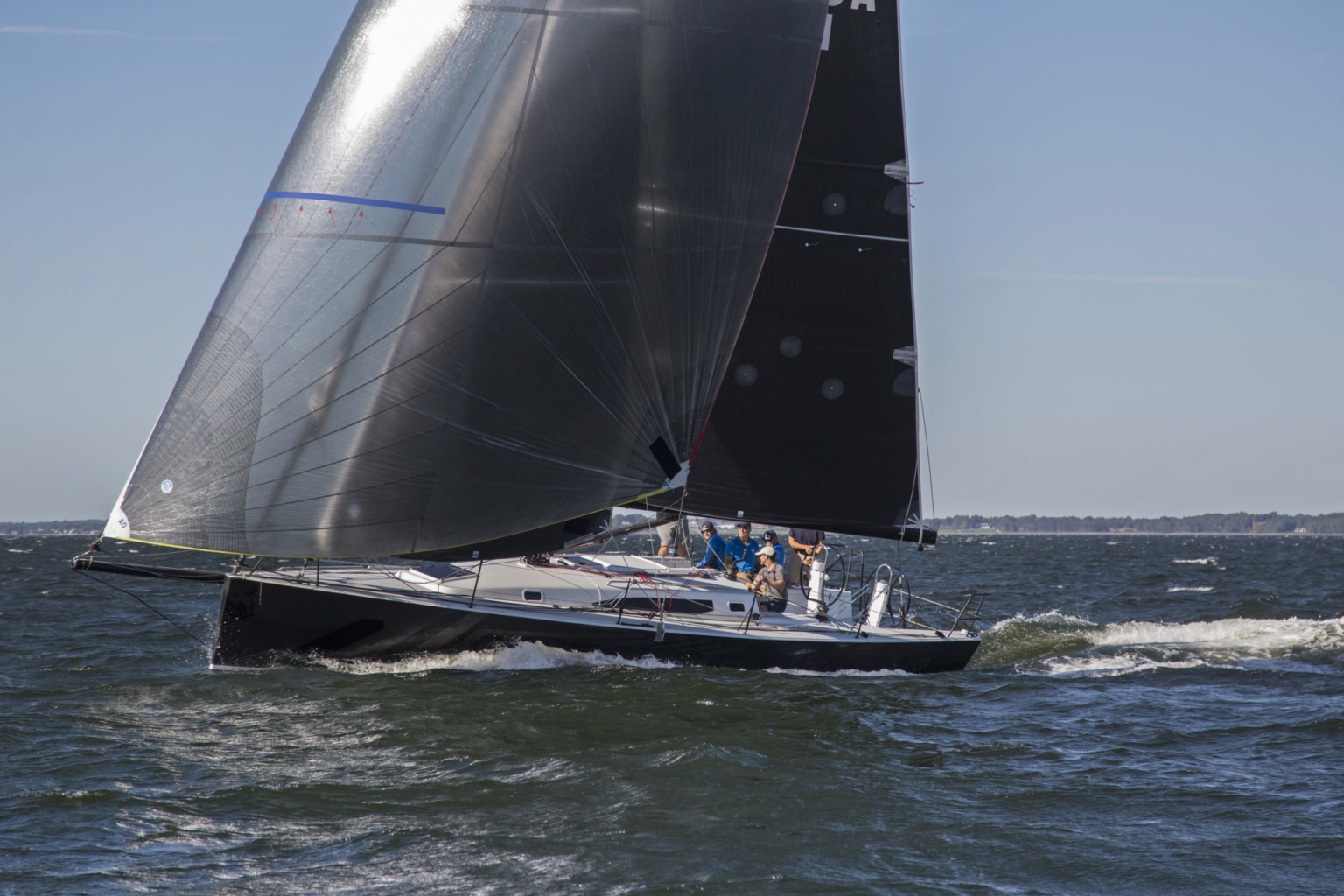People with sailboats use them in many ways, but broadly speaking we define them as either cruising or racing. The proper sails for each of these activities varies widely, but at the level most people engage in cruising and racing, we can simplify the differences between the sails required if we talk about performance, design, and materials.

Downwind Cruising and Racing Sails
The good news for racers and cruisers is that the America’s Cup has spun off significant developments in downwind sails for both.
For many years, the most common downwind sail for a cruising boat has been the asymmetrical spinnaker, tacked to the bow, also known as a gennaker. Easy sail handling is critical for cruisers, so the gennaker is typically hoisted inside a “sock” that is itself raised when it’s time to fill the sail. When it’s time to take it down, the sock is pulled down around the sail before the sail is lowered to the deck.
Early asymmetrical spinnakers were unstable and hard to trim, but the designs took advantage of America’s Cup technology, and all of a sudden we could produce full-molded tri-radial cruising sails. Now the shape of the sail is built into every seam instead of just the cross panels. As a result, the sails have a more natural draft position and fly more steadily.
Cruising sailors have begun adopting another America’s Cup development—the Code Zero sail, which is a very flat spinnaker set on a roller furler. When the true-wind angle is between 90 and 130 degrees, the Code Zero fills a big gap between the upwind jib and the downwind-oriented gennaker. Some cruisers find the roller-furling so convenient that don’t even bother with the gennaker anymore and simply tack downwind using their Code Zero’s.
The same benefits of Cup development have paid off in downwind racing sails, too, and most race boats will fly a mix of Asymmetrics and Code sails, plus staysails. While older boats still fly symmetrical spinnakers with poles that must be jibed by the crew, nearly all newer models use asymmetrical spinnakers set on a sprit or pole. Code sails have become even more important since most new boats are built with large mainsails and small, blade-style jibs instead of overlapping headsails. When a race boat like that begins to jib reach, it is massively under-powered unless a Code Zero is set.
Downwind sail materials are mostly commonly nylon. On bigger boats, we use laminates for the code sails to keep them stable, but on large cruising yachts and superyachts, nylon and polyester-based sails are often used for sails that are not so close-winded. A boat that will do some racing will find laminate is the ideal fabric to fill the gap as close as possible when the furling jib becomes less effective. If cruising only, a polyester or nylon will be the choice.
Learn more at: https://www.spinsheet.com/north-sails-resources




